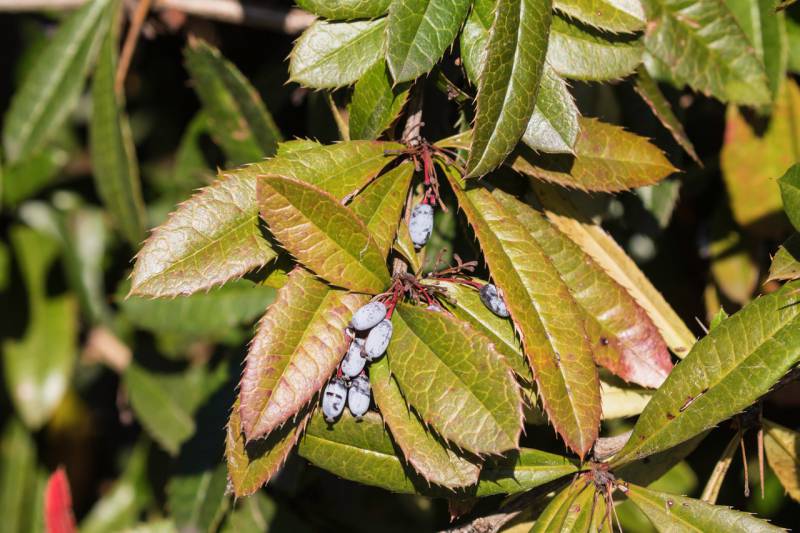Berberis nervosa
Berberis
barberry, mahonia, Oregon-grape
Leaves alternate, pinnately-compound, leathery;
leaflets 9-21, glossy to somewhat dull and glaucous, lance-ovate to ovate, 3-8 cm long and 1-5 cm broad, 4-6 veins from base, somewhat dull and glaucous, 6-13 spine-tipped teeth.
Inflorescences dense racemes, 6-17 cm long with 30-70 flowers;
bracts 3, greenish-yellow, 2-3 mm long;
sepals 6, yellow, 6-8 mm long;
petals 6, yellow, bi-lobed;
stamens 6, opposite of petals; pair of lateral teeth absent from filaments;
style none, stigma sessile.
Berries blue, glaucous, juicy, solid, oblong-ovoid to globose, 8-11 mm.
Berberis nervosa
Berberis
Occurring chiefly west of the Cascades crest in Washington; British Columbia to California, east to western Montana.
- Local floras:
BC,
CA,
OR
- Local Web sites:
CalFlora,
CalPhotos,
Flora NW,
PNW Herbaria
WildflowerSearch
iNaturalist (observations)
USDA Plants Database
- LBJ Wildflower Center
- SEINet
- Plants of the World Online
- Encyclopedia of Life
- Wikipedia
- Google Image Search
- Local floras:
CA,
OR,
WA
- Local Web sites:
CalFlora,
CalPhotos,
Flora NW,
PNW Herbaria
WildflowerSearch
iNaturalist (observations)
USDA Plants Database
- LBJ Wildflower Center
- SEINet
- Plants of the World Online
- Encyclopedia of Life
- Wikipedia
- Google Image Search



